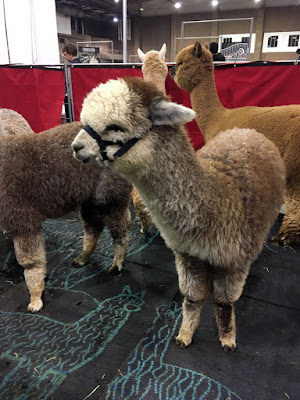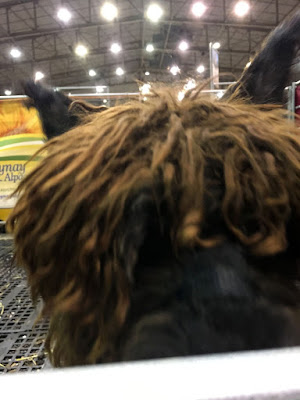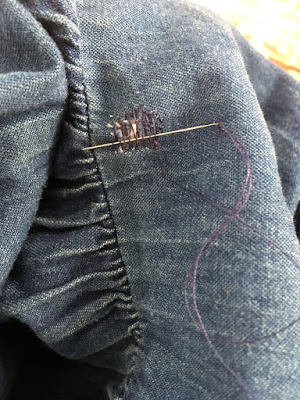Or alpacas and then mending. The alpacas are much cuter.
 |
| Boy band from the 90s reporting for duty. |
These two had stylish tuxedos on top, and skinny jeans below.
 |
| I guarantee there's food on the other side of that barrier. |
Somebody proved that the grass is
literally always greener on the other side of the fence. Always.
 |
| So fluffy. |
I love their faces. And their little bitty feet. And their fiber.
 |
Zoom lens.
|
Once in a while, someone comes over to say hello, too.
 |
| Don't wash your clothes before you mend them. |
Over the course of the weekend, I put a hole in my current favorite skirt, front and center (oy). And then I washed it, because it was just a
little hole. Pro tip: Don't...uh...do that. The hole will get bigger and the torn threads will be much fluffier and it'll make your life harder than it has to be.
I've also never darned anything, so this was a Learning Experience. As in, laying out evenly spaced warp threads to weave over a hole in fabric is more challenging than I would have expected.
 |
| I swear that thread isn't purple. |
Also, once you've done that, weaving the new patch is...weird. Mostly for tension reasons; it's tempting to cinch up the thread tight to close the hole, but it really needs to match the cloth as closely as possible. And the threads need to be packed in next to each other to make a sturdy piece of replacement cloth, which took me a few tries to get right.
 |
| It blends much better in person. |
I ended up adding a few threads of a second shade of blue, to blend the darker navy with the skirt fabric, and have been informed by reliable witnesses that if they notice the repair, it looks like an embellishment. Success!
 |
| Brute force and ignorance! |
So how does one put a hole in the front of a skirt? I mean, there are lots of ways. But I was kneeling on a pallet on top of a stack of other pallets, sawing the end riser free of the planks, and caught the last tooth of the saw on my skirt.
What?
OSHA inspectors look at my whole existence and weep. Construction (or destruction) work in a skirt is very,
very low on the list of safety violations I've committed. And I got a pile of usable wood for garden projects out of it, too.








Comments
Post a Comment